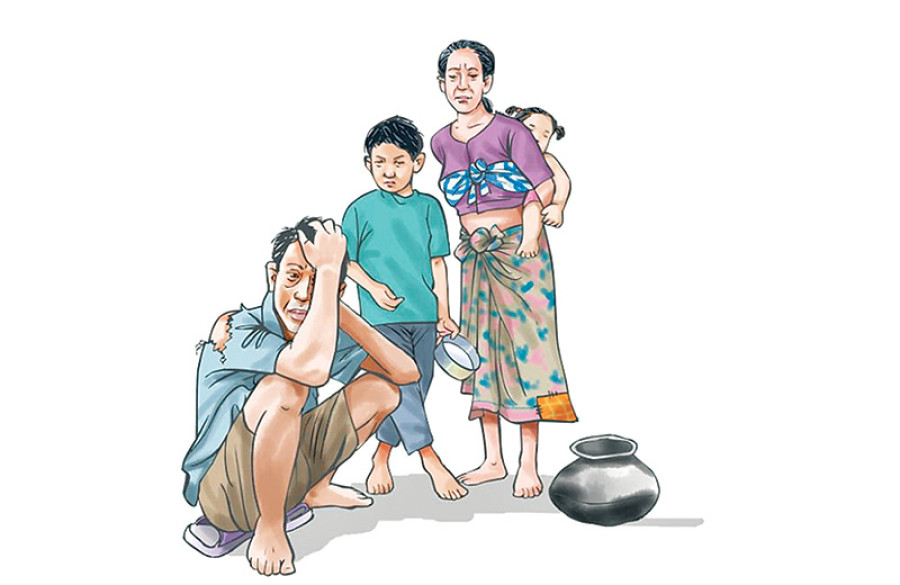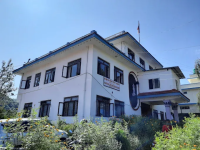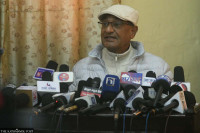National
Poverty Alleviation Fund was scrapped, but it still exists. What does it do?
The fund created at the height of insurgency has lost its relevance with local governments in place, officials admit.
Prithvi Man Shrestha
The Poverty Alleviation Fund was established in 2003 as elected representatives could not work with local communities and government agencies could not reach them because of the Maoist insurgency which was at its peak.
But in the changed political context under a federal system, local governments are active and have the primary responsibility of working for the welfare of the people.
Cognizant of the changed context, the Cabinet in November 2018 decided to restructure the Rs19 billion Poverty Alleviation Fund and scrap the Act that governs it by mid-December.
But even more than two years after the decision was made, it is yet to be implemented.
The government had allocated Rs150 million for the fund in the current fiscal year for it to help local governments form 600 cooperatives involving the users of more than 32,000 revolving funds that had been set up across the country to provide credit for income generation.
But the fund cannot make any decision in the absence of a functioning board.
“Our board is incomplete and cannot fulfill the quorum to hold its meeting. Therefore we have not been able to provide the fund to the local government for facilitation of mergers of the revolving funds,” said Nirmal Kumar Bhattarai, vice-chairperson of the fund.
Of the nine members on the board, as envisaged by the Poverty Alleviation Act-2006, there are at present only four, including the prime minister who is its chair, as the government has not appointed the other members.
“The PAF currently has nothing to do but it continues to exist,” admitted Bhattarai.
Besides Bhattarai there are 10 staff members and running the institution costs around Rs20million a year, according to Anjan Neupane, deputy executive director at the fund.
With the board failing to take any decision to transfer the budget to the local governments, the Finance Ministry has diverted the budgeted Rs150 million for other purposes.
“We don’t have the allocated budget now,” said Neupane.
In an effort to reduce poverty, the fund had created 32,000 revolving funds across the country which were operated by local communities to provide credit to people in the communities for income generation activities.
Its other activities included funding the building of community infrastructure like roads, trails, mule tracks, culverts, suspension bridges, truss bridges, short distance gravity cable ways, riverbed land reclamation, drinking water systems including sanitation, water management systems—plastic tanks, sprinkler/drip systems—that enhanced livelihoods.
Of its Rs19 billion fund, Rs15 billion came from the government, most of which in the form of grants from the World Bank while Rs4 billion was generated from within local communities across the country.
The federal government has already handed over the task of monitoring the revolving funds to local governments.
Giving continuity to the Poverty Alleviation Fund would also contradict the Guidelines on Operation of Community Organizations and Small Infrastructure Development Programmes promoted by the fund.
The guidelines, approved by the fund’s board on April 7, 2019, make local governments responsible for keeping records of community organisations and small infrastructure projects promoted by the fund; facilitating community organisations to continue anti-poverty initiatives; monitoring the operation of revolving funds established at the community level; involving community organisations in policy making of local governments and monitoring their transactions; and launching skill development programmes.
The guidelines also state that although poverty alleviation falls under the concurrent jurisdiction of all three tiers of government, formation of community organisations and their mobilisation comes under the jurisdiction of local governments.
Just a week after the Cabinet decided in November 2018 to scrap the Poverty Alleviation Fund, it appointed Bhattarai the vice-chair with the responsibility of clearing arrears of the fund and preparing the exit strategy for the World Bank, among others.
As per the Cabinet decision, all functions and liabilities of the fund should have been handed over to the Ministry of Land Management and Poverty Alleviation. This decision too is yet to be implemented.
As the Poverty Alleviation Fund was formed as an autonomous body under the Poverty Alleviation Act-2006, the government had initiated the process of scrapping the Act through Some Nepal Laws Amendment bill. The process is also stalled at the Prime Minister’s Office.
According to Bhattarai, Prime Minister Oli had wanted to continue the fund in some form despite an earlier Cabinet decision of scrapping it.
During the board meeting on April 7, 2019, the prime minister had insisted that the PAF would be continued, Bhattarai said.
Officials at the Prime Minister’s Office say various options regarding the future of the fund are indeed under discussion.
“A plan is being prepared regarding the future of this institution,” said Baikuntha Aryal, secretary at the Prime Minister’s Office. “But nothing has been decided.”
He refused to go into the specifics of the plan.
Poverty in Nepal has declined significantly since the fund was created.
According to the second National Living Standard Survey 2003-04, 30.8 percent of Nepalis were living under the poverty line. The National Living Standard Survey 2010-11 found that this figure had gone down to 25.2 percent.
According to the National Planning Commission, 18.7 percent of the population lived below the poverty line in the fiscal year 2018-19.
Those spending less than Rs19,231 per year on food, non-food and housing are considered to be living below the poverty line, according to the National Living Standard Survey 2010-11.
“Even though Nepal made remarkable progress in poverty alleviation over the last two decades, the PAF alone cannot be credited for this reduction in poverty but its role cannot be denied fully,” said a former official of the fund.
In an assessment in 2017, the World Bank termed the outcome of the fund’s programmes as well as the performance of the government on it as satisfactory.
But the fund has had its share of scandals.
The Commission for Investigation of Abuse of Authority filed two corruption cases at the Special Court against 50 senior officials and staff of the fund in March 2015 and April 2016.
In September 2018, the Special Court convicted nine Poverty Alleviation Fund officials, including then executive director Raj Babu Shrestha, of corruption.
A probe conducted by the National Vigilance Centre, a corruption watchdog under the Prime Minister’s Office, also unearthed several irregularities in the fund in 2019.
According to a report obtained by the Post, the centre found possible irregularities of Rs185.96 million in the activities under the fund’s Infrastructure Sub Project and Income Generation programme. The centre also found equipment from its Kathmandu office valued at Rs41.47 million missing.
Former officials too concede that the fund does not have a role anymore in the changed context.
“As poverty alleviation falls under the jurisdiction of all three tiers of government—with local governments playing the role of executing agencies, having an institution like PAF to work on poverty alleviation doesn't make sense,” said the former PAF official. “Maybe politics or personal interest has a role in retaining it up to now as the communist government doesn’t want to be seen as one that scrapped an institution formed to reduce poverty.”




 16.12°C Kathmandu
16.12°C Kathmandu













%20(1).jpg&w=300&height=200)

